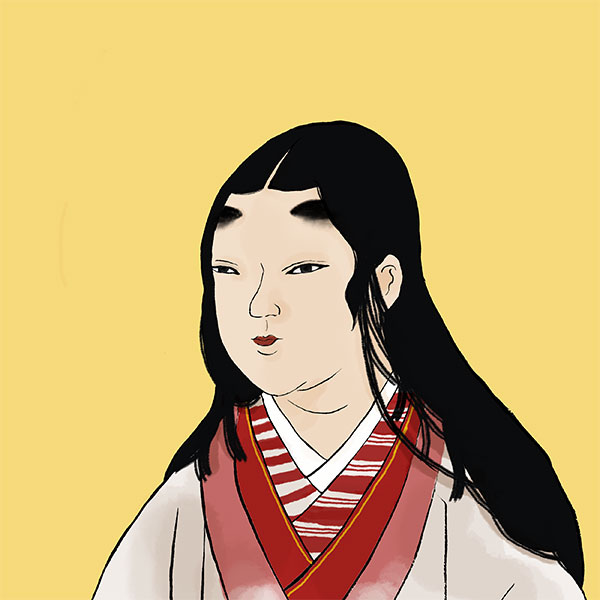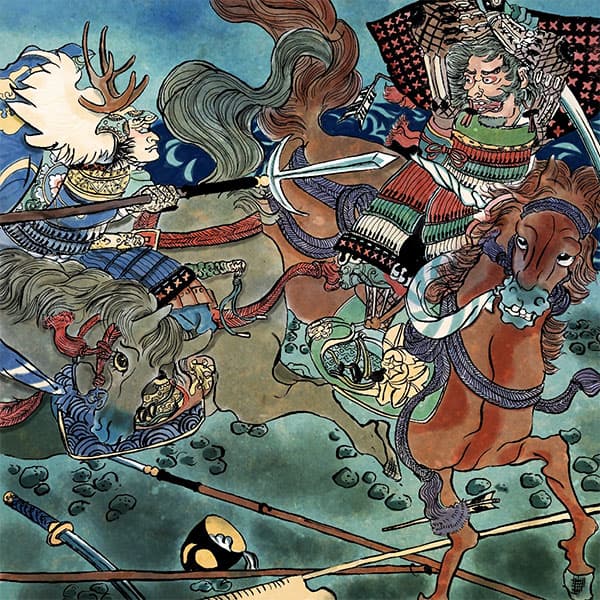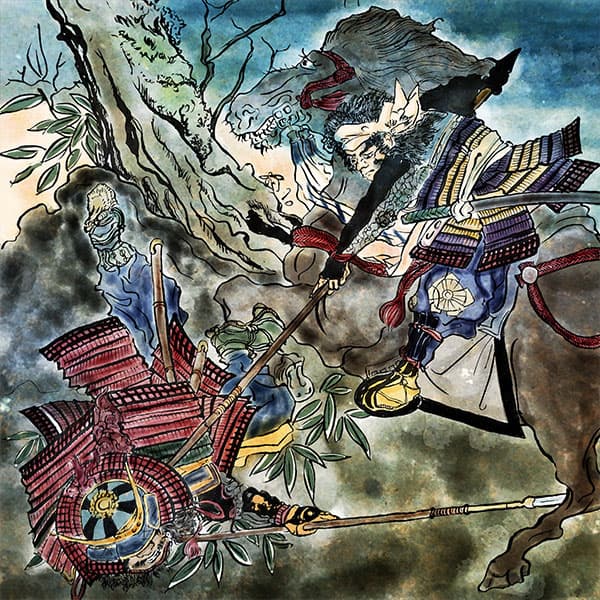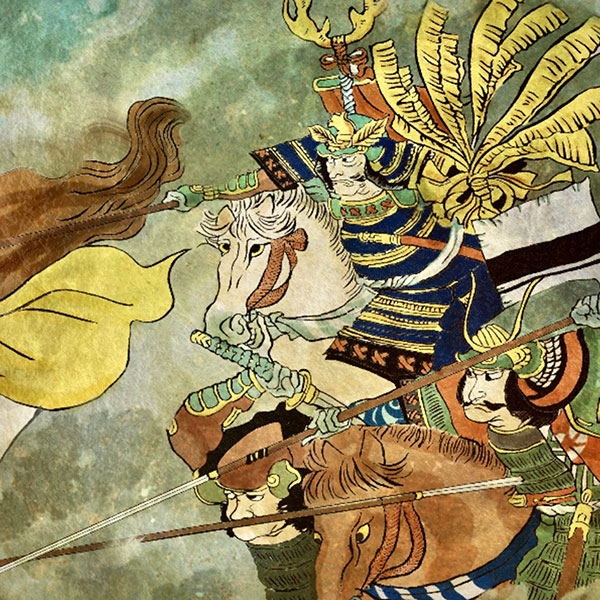City people (2/2)A beautiful woman representing the Sengoku period

City people
- Article category
- biography
- name
- City people (1547-1583)
- place of birth
- Aichi prefecture
- Related castles

Ichijodani Asakura Residence
- related incident
According to the conventional wisdom, it was through the mediation of Nobutaka Kobe, but a letter from Katsuie remains that states, ``I have made an agreement with Hideyoshi...I have obtained everyone's consent to marry the main figure.'' It is also said that it was intended to take into account Katsuie's wishes for the city and to suppress Katsuie's dissatisfaction with the events of the Seishu Conference.
The wedding ceremony was held on August 20th, four months after the Honnoji Incident, at Nobutaka's residence, Gifu Castle. In the same year, at Katsuie's recommendation, he held a 100-day memorial service for his older brother Nobunaga at Myoshin-ji Temple in Kyoto.
In 1583, Katsuie, who had been in conflict with Hideyoshi Hashiba for some time, was defeated at the Battle of Shizugatake in April.
Katsuie fled and returned to Echizen Kitanosho Castle. Hideyoshi quickly pursued them, surrounded the castle, and launched a fierce attack. On the eve of the fall of Kitanosho Castle, Katsuie, who had decided to commit seppuku using the castle as his pillow, advised Oichi to leave the castle and receive protection from Hideyoshi Hashiba, but Oichi refused and decided to commit suicide together with him. going to decide. Feeling pity for the three daughters to be left behind to die, he entrusted them to a samurai named Shinrokuro Tominaga and had them delivered to Hideyoshi, along with a letter from Oichi asking them to take good care of them as they were the ``main story.'' I did. After that, Katsuie, the city, his family, his direct retainers, and his maids held a drinking party all night long to say goodbye to their lives, and then on April 24th, more than 80 of them committed suicide. He passed away at the age of 37. Kitanosho Castle was set on fire and burnt down.
It is said that when Hideyoshi learned of this, he regretted not being able to get Oichi, and there is also an anecdote that tells of his love for women, who did not have an eye for beautiful women.
Places and legends related to Oichi
- ・Otari Temple
- Otari-dera Temple dates back to the 5th year of Jinki (728) during the reign of Emperor Shomu, when Taicho Shonin, the founder of Kaga Hakusan, opened a Shugen dojo on the peaks from Mt. Hakusan to Mt. Ibuki, and at that time it was a small temple. It was just one of the monks built in Taniyama. It seems that it was called Joshoji Temple at that time, and this is said to be the origin of the current Kodari Temple.
At the time of its opening, Mt. Tsunekatsu received an imperial plaque from Emperor Gohanazono in 1429 and became a designated imperial temple. Around 1524, Ryomasa Asai built a castle on Mt. Otariyama.
At this time, it seems that an exchange of temple territory took place and all of Rokubou Ilzan came down to the Chatan district ruins (the eastern foot of Mt. Otari).
Mr. Asai designated this place as a prayer temple, donated the Buddha field, and changed the name of the temple to Otari-dera. At this time, Otari Temple was highly respected by the Azai family, so Oichi may have often brought his young children to visit the temple. It was a place of spiritual comfort for the people of Oichi and the three sisters, but when Otari Castle fell in 1573, the temple was completely burnt down, except for the main image, and there was no trace left.
It is said that in 1593, Toyotomi Hideyoshi rebuilt Otari-dera Temple at its current location and protected it by giving it a vermilion seal of over 44 koku, after which Tokugawa Ieyasu established the temple territory as 40 koku and supported it.
The only Buddhist statues that remain today are those that survived the disaster, but the dates of most of them are unknown and the details are not known. This temple also houses Aizen Myoo, which is said to be the Nenjibutsu of Oichi. - ・Odari Castle
- Odari Castle, which is counted as one of Japan's five great mountain castles, was built on a ridge south of Mt. Otari (Mt. Ibe) at an altitude of approximately 495 meters, and is said to be the scene of the tragedy between Nagamasa Asai and Oichi no Kata.
It was also the residence of the Sengoku feudal lord, the Asai clan, and was known as a strong mountain castle. It is a long north-south mountain castle that makes use of the ridges and valleys of the Odariyama area, and it is thought that when the castle was built, the main enclosure was located near Otake Castle, which is located further north than the current main enclosure site. It was expanded successively by Hisamasa and Nagamasa, and became the current castle.
However, during the war between Genkame and Tensho, the castle was attacked by Oda Nobunaga for four years and finally fell. After that, the base in Kitaomi moved to Nagahama Castle, which became an abandoned castle.
After the castle fell, Odari Castle was dismantled to be used as construction materials for Nagahama Castle, but judging by the large stone wall that still exists near Sannomaru, it is believed that it was an advanced and large-scale castle at the time. Masu.
Today, in addition to the earthworks and kuruwa, the stone walls that were pioneered remain as remains, and are designated as national historic sites. - ・“Nodobutsu” by Oichi
- There is a tombstone for Nagamasa Asai in the Inamasu family graveyard at Jokoji Temple in Shimotomoda, Asan-cho, Asan-gun, Mie Prefecture (present-day Iga City).
Jirozaemon, the founder of the Inamasu family, was a senior vassal of the Asai family. However, after the Asai family fell, he changed his surname to ``Hibi'' and then ``Inamasu.'' In the Kyoho era of the Edo period, he served the Todo family, which ruled Ise and Iga, and is said to have received a thorough training in Iga ninjutsu.
The Inamasu mansion from the Edo period still remains at the current location, and it is said that the city's ``Nodobutsu'' is kept in the storehouse of the same house.
Reread the article by Oichi.
- related incident

- WriterTomoyo Hazuki(Writer)I have loved history and geography since my student days, and have enjoyed visiting historical sites, temples and shrines, and researching ancient documents. He is especially strong in medieval Japanese history and European history in world history, and has read a wide range of things, including primary sources and historical entertainment novels. There are so many favorite military commanders and castles that I can't name them, but I especially like Hisashi Matsunaga and Mitsuhide Akechi, and when it comes to castles, I like Hikone Castle and Fushimi Castle. Once you start talking about the lives of warlords and the history of castles, there's a side of you that can't stop talking about them.






